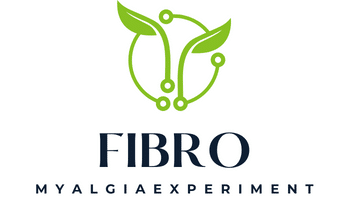As a night-shift worker, you may find that training your pet dog presents a unique set of challenges. While your work schedule could mean spending less time with your pet during the day, it doesn’t mean that your dog has to miss out on the benefits of a well-structured training routine. Developing a positive, productive training schedule specifically tailored to your night-shift lifestyle is not only feasible but also crucial to your dog’s well-being. This article will show you the best methods to help you and your pet thrive despite the unusual hours you keep.
Balancing Sleep and Exercise
Firstly, it’s important to note that dogs, much like humans, need a good night’s sleep. Dogs sleep between 12-14 hours a day, with puppies needing as much as 18-20 hours a day. However, when you’re working night shifts, your dog’s sleep schedule may become disrupted.
Cela peut vous intéresser : How to Design a Feeding Strategy for a Dog with Megaesophagus?
To balance your dog’s sleep and exercise schedule with your night-shift routine, you will need to consider several factors. Ensuring your dog gets enough sleep during the day while also fitting in enough exercise can feel like a juggling act. However, effective time management can help establish a routine that works for both you and your pet.
Firstly, don’t feel guilty about letting your dog sleep during the day while you’re at work. It’s essential for their health and well-being. Ensure that your dog has a quiet, comfortable space to sleep, such as a crate with a comfortable bed inside. The crate should be placed in a quiet part of the house where they won’t be disturbed.
En parallèle : What’s the Best Approach to Introduce a New Bird to an Aviary?
During your waking hours, ensure your dog gets plenty of exercise. Morning walks or play sessions can help tire them out, ensuring they sleep well during the day.
Food and Hydration Schedule
Maintaining a regular feeding schedule for your dog is equally crucial. Dogs thrive on routine, and feeding times are a significant part of that routine.
Even if you work night shifts, try to keep your dog’s feeding schedule consistent. Dogs should be fed at least twice a day – once in the morning and once in the evening. Remember, a dog’s digestive system works best when meals are spaced out throughout the day.
Be mindful of the timing of your dog’s last meal of the day. Feeding your pet too close to bedtime can cause digestive issues, which could disrupt their sleep. Also, ensure your dog has continuous access to fresh water, especially if you’re not home to monitor their hydration regularly.
Structuring Training Sessions
Training sessions play a pivotal role in a dog’s life. Not only do they help instill good behavior, but they also serve as a form of mental stimulation for your pet.
You can conduct training sessions in the morning before you sleep or in the evening before you go to work. Your dog’s energy levels will likely be at their highest during these times, making it the best time for them to learn and retain new information.
Remember, training should be a positive experience for your pet. Use rewards such as treats or toys to motivate your dog during training sessions. Also, keep sessions short and sweet – about 15 minutes at a time – to help maintain your dog’s focus and interest.
Managing Separation Anxiety
Some dogs may develop separation anxiety, especially if they are left alone for prolonged periods at night. This can lead to destructive behavior, constant barking, or other problematic behaviors.
To manage this, gradually acclimate your dog to your absence. Start by leaving your pet alone for short periods and gradually increase the duration. You can also create a safe space for your dog, such as a crate or a specific room in the house, where they feel secure even when you’re not home.
Invest in interactive toys that will keep your dog mentally stimulated when you’re not around. Treat-dispensing toys or puzzle toys can help keep your pet occupied and reduce feelings of anxiety during your absence.
Remember, every dog is different and may take more or less time to adjust to your routine. Be patient and consistent with your schedule, and in time, your dog will adapt. By effectively managing sleep, exercise, feeding, training, and separation anxiety, you can ensure that your night-shift lifestyle does not negatively impact your dog’s wellbeing.
Potty Breaks and Quality Time
Offering consistent potty breaks is a crucial facet of dog training. Under normal circumstances, a healthy adult dog would need to go out at least three to five times a day. Puppies, older dogs, and some smaller breeds may need more frequent breaks. As a night-shift worker, you might need to be a little creative to accommodate their needs.
You could schedule a potty break right before you leave for work, another when you come back, and a few more during your waking hours. You could also consider hiring a trusted dog walker or asking a neighbor to help during the time you’re at work.
If you have a safe and secure yard, dog doors can be a good option. They allow your dog to relieve themselves when needed. However, be mindful that a dog left alone for too long can get bored and indulge in destructive behaviors.
Quality time is as important as any training session. Even though you might be tired after a busy night shift, dedicating some quality time to your pet is vital. This doesn’t necessarily mean you need to engage in high-energy play all the time. Quality time can be as simple as petting your dog, brushing their coat, or just sitting together in a calm environment. This kind of interaction strengthens the bond between you and your dog, making your training efforts more fruitful.
Consulting a Professional Dog Trainer
For night-shift workers, seeking professional help to train their dogs can be beneficial. A professional dog trainer can provide personalized training plans that cater to your dog’s specific needs and your unique schedule. They can also help identify and correct any behavioral issues that may arise due to your unconventional work hours.
Remember, different dog breeds have different needs and temperaments. A golden retriever may have different training needs compared to other dog breeds. A professional dog trainer can design a training plan that is breed-specific and suitable for your dog.
Also, you could consider dog sports or obedience classes during your free hours. These activities not only offer your dog a great workout but also stimulate their minds. Plus, they provide an excellent opportunity for you and your dog to socialize.
Conclusion
In conclusion, as a night-shift worker, training your dog might seem like a daunting task. However, with a consistent daily routine and a positive dog training approach, you can manage your dog’s needs effectively. Remember to balance sleep and exercise, maintain a regular feeding and hydration schedule, structure training sessions appropriately, manage separation anxiety, and account for regular potty breaks.
Taking help from a professional dog trainer can also make the process smoother and more efficient. Regularly refill your dog’s water bowl, ensure they get their potty breaks, and spend quality time with them. With patience, consistency, and affection, your night shift work will not impede on having a well-trained, happy, and healthy dog.






